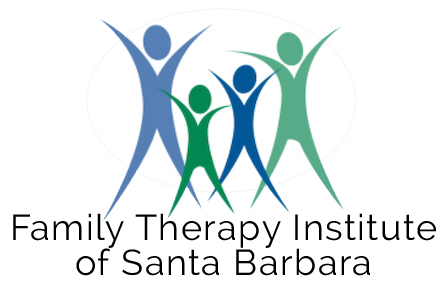The Founding and History of FTI
Our Founder, Debra Manchester
After graduating from Stanford in 1974, Debra Manchester was hired as the Executive Director for Social Advocates for Youth (SAY), a non-profit agency in Mountain View, California with ten other centers including one in SB. The 1960’s brought thousands of runaway teens to the Bay Area. SAY offered individual and family counseling to at-risk children, youth, and families in response.
It was during this time, Debra noticed a distinctive pattern when meeting with runaways. When families agreed to be part of treatment, the kids mostly got better. Without family involvement, increased substance use and the involvement of the juvenile justice system was more likely. But how to get families to participate? And what to offer?
Debra pursued an intensive study in family systems theory and therapy from that point on, both in graduate school and in training from many of the family therapy masters. She met her future husband, Don MacMannis, and they settled in Santa Barbara where Don could complete his psychology post-doc fellowship at Devereux School.
Debra joined the staff of SAY Santa Barbara where she teamed up with Gary Meiers, a staff therapist who was inspired by his training at Philadelphia Child Guidance Clinic. Family Therapy Institute originated as a project offered through Social Advocates for Youth of SB by Debra and Gary. FTI was incorporated as its own non-profit in 1979. Gary left to start a family therapy practice in Canada. Debra and Don have been at the helm ever since.
Our Objectives
We wanted to create a counseling center that felt like a home and that was accessible to all, where differences are deeply valued and wholly embraced. We also wanted to be able to serve families from all walks of life and income levels under the same roof. We pursued an innovative financial model generating income through fees for service and for workshops and education. This has allowed us to spend most of our time serving our clients rather than constantly fund-raising.
Our Name
The reason for our name—Family Therapy Institute of Santa Barbara—is because key to the mission has been to promote the study of “systems thinking” as it can be applied to help create change whether for children, couples, families, or whole communities. Research is constantly bringing new information and innovation to the field of psychotherapy and mental health. We wanted to train the next generation of therapists in effective, evidence-based models and to bring educational offering to the Santa Barbara public as well.
We Are a Training Institute
As a training institute, we have the opportunity to bring the best therapists in the world to our home. In the early years, we focused on family therapists. Virginia Satir, Ph.D. filled the Santa Barbara Jr. High auditorium. James Alexander, Ph.D., founder of Functional Family Therapy, one of the most widely researched models, came many times.
Trainers in structural family therapy like Charles Fishman, M.D. and Virginia Goldner, Ph.D. Bowenian therapist, Monica McGoldrick, Ph.D., taught the importance of exploring culture and ethnicity. We brought strategic therapists like Carlos Sluzki, M.D. and Cloe Madanes, Ph.D. We brought international strategic therapists from Milan, Dr.’s Cecchin and Boscolo to spend a week with us in Santa Barbara and at Stanford University. Therapists came from all over California to participate.
Building the Team
We brought therapists who specialized with couples such as Gestalt therapist, Judith Brown, Ph.D. and Jordan & Margaret Paul, Ph.D’s, who offered an experiential workshop for the public. The FTI staff and several hundred therapists participated in a full weekend of training by John Gottman, M.D. and Julie Schwartz Gottman, Ph.D. We offered training with Esther Perel, Ph.D. in 2008 when she had just published Mating in Captivity and Pat Love, Ph.D. after her best-seller, Hot Monogamy.
For those working with young children, we had workshops with Violet Oaklander, Ph.D. on Gestalt approaches to play therapy, Robert Brooks, M.D. on fostering resilience and Eliana Gil, Ph.D. on working with victims of child sexual abuse. We found a kindred spirit in Ron Taffel, Ph.D. in his innovative work in Breaking Through to Teens: A New Psychotherapy for the New Adolescence. We focused on whole-health approaches with Joan Borysenko, Ph.D. and learned new approaches to anxiety, depression and ADHD from holistic child psychiatrist Scott Shannon, M.D.
Influences
We were impressed by the confluence of Eastern thought and psychotherapy. We filled the old Victoria Street Theater when we invited Mark Epstein, M.D. We filled the Lobero when Ram Dass did an all-day workshop for the public, paying only what each could afford. We had studied the concept of emotional intelligence and co-sponsored a public lecture on destructive negative emotions with Dan Goleman, Ph.D.
Eye Movement Desensitization and Reprocessing
When EMDR (Eye Movement Desensitization and Reprocessing) was first introduced by Francine Shapiro in 1987, FTI senior staff Michael Dunn and Michael Madden learned from the best by training with her. We witnessed how effective this new model was for desensitization and trauma, and other staff jumped on board. More recently, the same is true for the use of ketamine-assisted psychotherapy (KAP). A number of us spent hours in training to carefully and effectively use this method of change. Innovation, new learning and integration remain central to our values and techniques.
